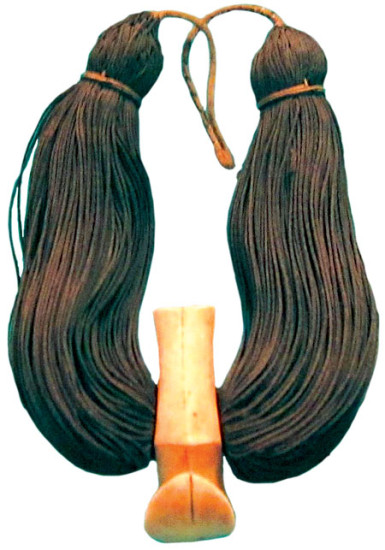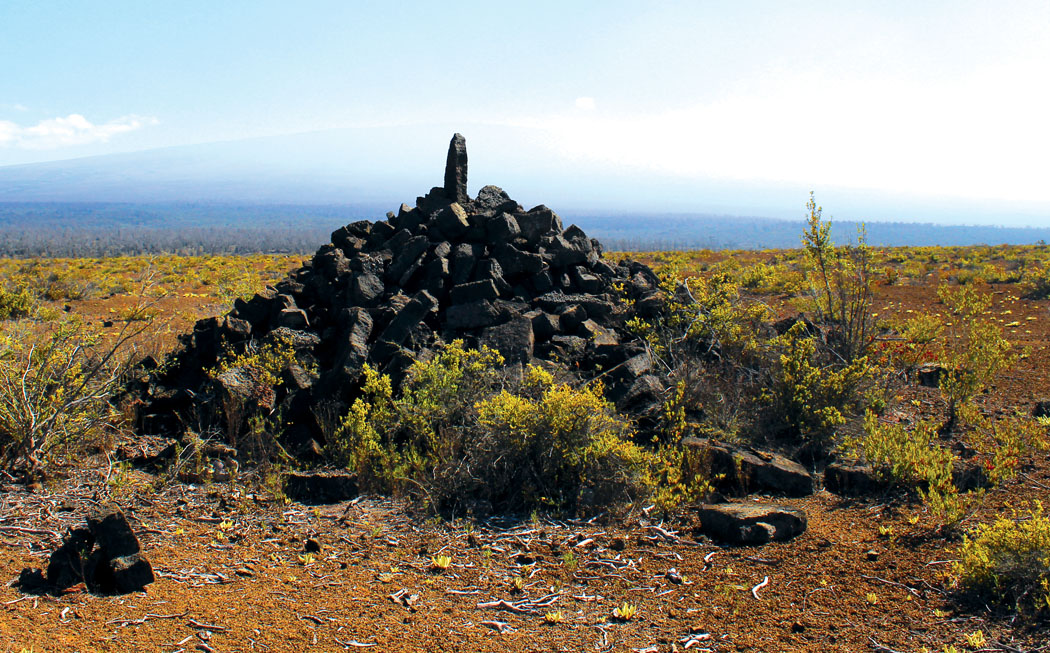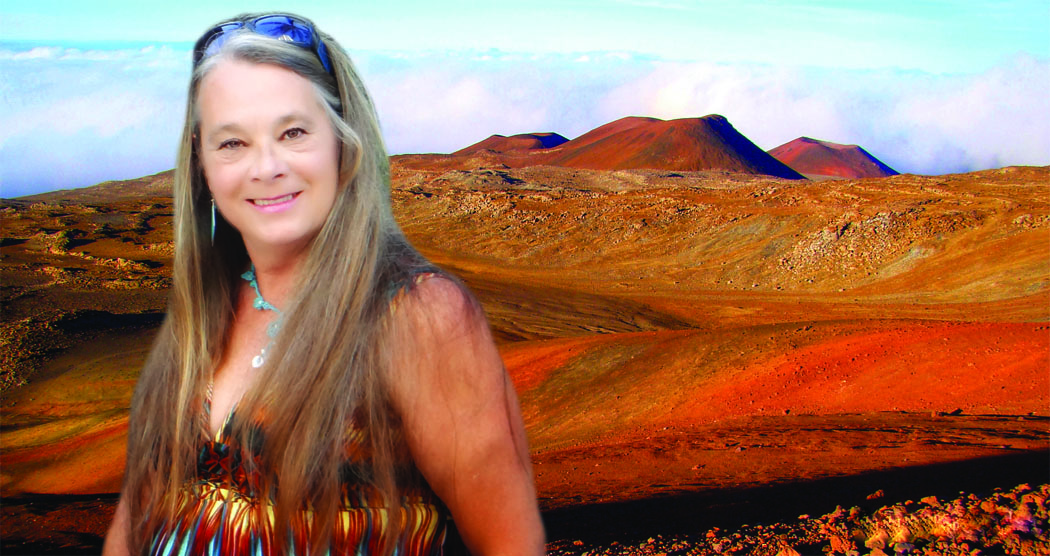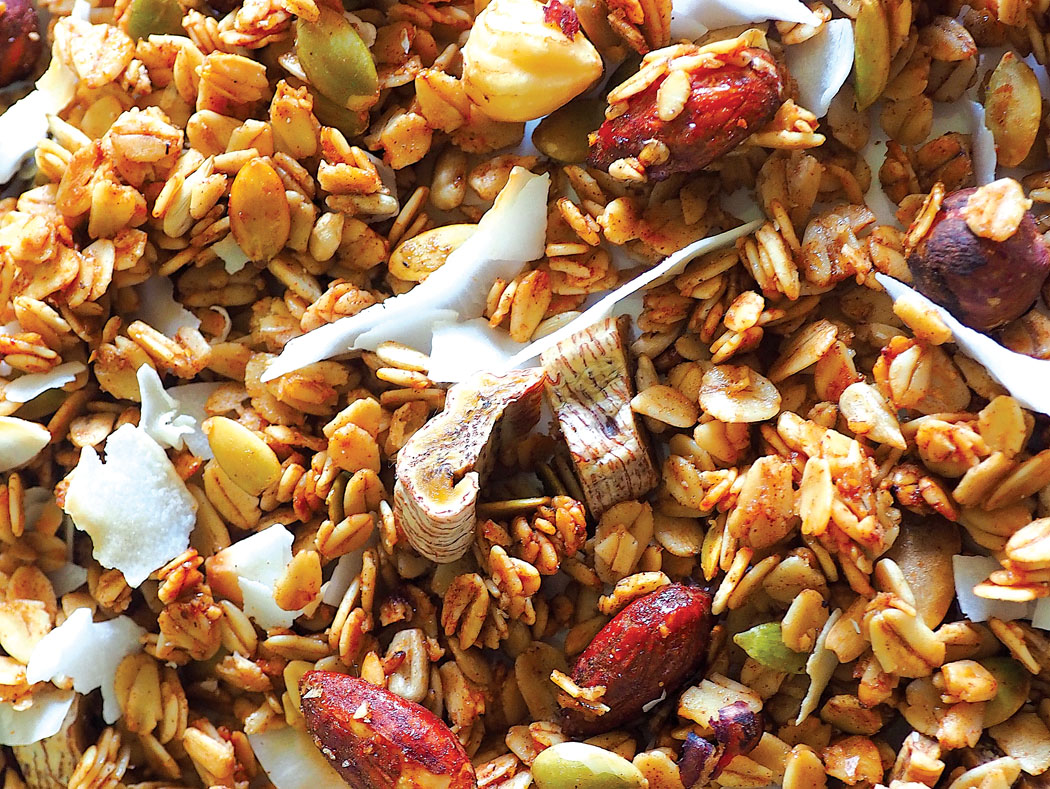
ʽĀhua A ‘Umi Heiau: King ‘Umi’s Legacy

By Sara Stover
Across a high plateau between Maunaloa and Hualālai lie numerous ‘āhua (stone piles) that appear to be the remains of an ancient structure. The man who initiated the building of this heiau was more than the commoner he once seemed. King ‘Umi began his life as a humble farmer and was eventually responsible for the building of the ‘Āhua A ‘Umi Heiau, which represented the first unification of Hawai‘i Island.
The Meeting Place
On the east side of Hualālai is a plateau of cinder and lava where worn pyramids whisper of an age when Hawai‘i Island’s six districts once met in the shadows of two volcanoes. The site is comprised of a central heiau built of dry-laid rock, with eight ahua pyramids surrounding it.
According to an 1840 survey by Charles Wilkes, the three tall pyramids symbolize the districts ‘Umi governed, and five additional pyramids were built by conquered districts. Wilkes was told of an ancient time when a king built a temple in this meeting place to commemorate the unification of Hawai‘i Island under his rule.
The Farm Boy Who Was Not Who He Seemed

Before he was ali‘i, ‘Umi-a-Līloa was a typical teenager, until his mother revealed a secret. ‘Umi’s father, Ali‘i-ai-moku (District High Chief) Līloa, ruled Hawai‘i Island until 1495. King Līloa’s bloodline can be traced, unbroken, back to Hawaiian creation. During his reign, Līloa traveled throughout his kingdom, while his wife Pinea, a Maui chiefess, remained at home in Waipi‘o Valley to raise their children.
While visiting the Hāmākua District, Līloa encountered a beautiful woman bathing in a river. The beauty’s name was Akahia‘kuleana (Akahi), a Kalahuimoku descendant who was married to a commoner. Līloa fell in love with Akahi, claiming his right to her as king, and Akahi accepted his claim. After they consummated their love, Akahi discovered she was pregnant with Līloa’s child. Līloa’s place, however, was in Waipi‘o, the center of Hawaiian government. Līloa instructed Akahi that if she were to give birth to a male, he should be named ‘Umi-a-Līloa (‘Umi) and should be sent to Waipi‘o upon reaching puberty.
Līloa left Akahi with royal tokens to prove the child’s identity, which she promptly hid: a yellow lei niho palaoa (a wreath worn by ali‘i), a red waistcloth, and a whale-tooth ornament. Akahi did give birth to a son, raising him on their taro farm.
‘Umi discovered his true identity at age 16. His stepfather intended to punish him for misbehaving when his mother intervened and told her husband that he could not touch ‘Umi because the boy was his chief. Uncovering the tokens she had hidden, Akahi presented them to ‘Umi and explained that he was the son of King Līloa. Akahi then entrusted the tokens to ‘Umi and sent him to Waipi‘o Valley.
Līloa’s royal palace was heavily guarded and intrusion was punishable by death. The bold ‘Umi jumped over the palace wall and now only the spears of the king’s guards came between him and his father.
‘Umi beat down the spears and marched into Līloa’s quarters, where he presented the tokens to his father. King Līloa immediately recognized the tokens of sovereignty, however it may have been ‘Umi’s fearlessness that truly proved to the king that this was indeed his son.
The Custody of the Gods

‘Umi was highly favored by his father, and was soon established at court on equal footing with Līloa’s oldest son Hākau, who had been born to Pinea. Hākau was displeased with the discovery of a half-brother, and Līloa’s affections for the young man only perpetuated this displeasure. Līloa assured Hākau that he, and not ‘Umi, would become king after his father.
Less than two years later Līloa died, leaving the title of king to Hākau, and the custody of the gods and temples to ‘Umi. Although Līloa had decreed that ‘Umi should be counselor to Hākau, the new king’s treatment of his half-brother was hostile.
This hostility drove ‘Umi and his three companions, Koi, Piimaiwaa, and Omaukamau, out of Waipi‘o. They traveled to Waipunalei (in the Laupahoehoe forest region) where they could fish, hunt, and live peacefully. In time, ‘Umi gained respect among the people for being caring, and he amassed a following. Local ali‘i began to believe ‘Umi to be of the highest chiefly nature.
During this period, the kāhuna (priests) were believed to have such power that no king could defy them. Hākau, however, did not believe in the kāhuna’s power, which insulted the priests. Among these were Nunu and Kakohe, the late Līloa’s most-trusted kāhuna. Hākau denied them care as they recovered from illness, which further offended them.
The Listening Leaves
The book The Legends and Myths of Hawaii: The Fables and Folklore of a Strange People details many signs that foretold ‘Umi’s destiny. One day, ‘Umi was walking alone among the trees in Waipunalei. Even trees are not always what they seem, though, for one of these was not a tree at all, but a man towering more than 11 feet tall. The giant’s name was Maukaleoleo, a man who was transformed by an encounter with a god who had offered him a fish to eat. This was no ordinary fish, for after eating it, Maukaleoleo grew from boy to giant overnight. “‘Umi, son of Līloa, here in the hills, among the listening leaves, let Maukaleoleo be the first to hail you mo‘i [king] of Hawai‘i,” Maukaleoleo declared, assuring ‘Umi that he would indeed become king.
The following day, Kaoleioku, a high priest of the Manini temple, sent a messenger to ‘Umi. Intrigued, he followed the messenger to Kaoleioku’s estate, nestled in a forest south of Waipunalei. The priests Nunu and Kakohe also made the journey.
Kaoleioku’s estate soon transformed from a peaceful habitation among banana groves to the basecamp for a revolution. With the support of Kaoleioku and the priests, ‘Umi began to plan a long-overdue attack on Hākau.
A secret supporter of the rebellion, the high priest Laeanui convinced Hākau that he had angered the gods and should send Waipi‘o’s people to the mountains for war feathers of royal colors, and ‘ōhi‘a logs for idols to pacify them. Hākau did so, and was alone in the valley with only Kakohe, Nunu, and a steward for company.

Unification Under King ‘Umi
Without Hākau’s people to defend him, ‘Umi and more than 2,000 warriors found him vulnerable as they entered Waipi‘o. Carrying offerings wrapped in ti leaf, they easily got close to Hākau. Wrapped up in these leaves were rocks, which the warriors used to stone Hākau to death.
Some manuscripts claim Kaoleioku slew Hākau as a sacrifice in the name of the gods. Although it remains uncertain at whose hands Hākau died, it is clear that by the time Hākau’s people returned to Waipi‘o, ‘Umi had taken charge of Līloa’s kingdom. Eventually, King ‘Umi united Hawai‘i Island, becoming the reigning ali‘i-ai-moku and the religious authority.

Relocation of the Center of Government
King ‘Umi moved the center of Hawaiian government from Waipi‘o Valley to a plain, far inland. It has been suggested this point provided a military advantage, as ‘Umi could see adversaries approaching from any direction. Other claims suggest that King ‘Umi moved the center of government to the inland location for spiritual reasons, building the ‘Āhua A ‘Umi Heiau in an area that was believed to be the island’s piko, symbolizing the center of all energy or the navel where life begins. This may explain why ‘Umi gathered all his people here for a census, where each person in the kingdom deposited a stone on a pile. Representing the unified districts, the large ‘āhua surrounding the heiau reportedly measured roughly 23 feet in diameter and 13 feet high.
From 1510 to 1525, King ‘Umi governed his lands justly. ‘Umi’s royal bloodline remained unbroken for several hundred years, making it the longest unbroken bloodline to ever rule Hawai‘i Island.

The Stones That Still Speak
By the 19th century, the site of ‘Āhua A ‘Umi Heiau was used for a livestock corral. In 1849, Judd Trail was created near the site, intended to be a direct route from Hilo to Kona; however, Maunaloa’s 1859 eruption crossed Judd Trail, and route completion was abandoned. Although there have been proposals to complete development of the trail system to include this area, it is predominantly unreachable at present and the release of the site’s location to the public is restricted.
Since 1974, King ‘Umi’s heiau has been listed in the National Register of Historic Places. Much of the heiau still remains intact today, owing partially to its inaccessibility. Those who have unintentionally found this sacred spot are struck by the significance of the stones, as each one represents the people that ‘Umi governed. Such ‘āhua are neither to be added to nor removed—they are regarded with the utmost respect.
Through stones, King ‘Umi changed the course of Hawaiian history, and at the piko of our island lie the stones that keep his story alive. ❖
Resources
Hawaii and Its People, The Land of Rainbow and Palm by Alexander Stevenson Twombly
Fornander’s Hawaiian Antiquities and Folklore by Abraham Fornander and Samuel H. Elbert
The Legends and Myths of Hawaii: The Fables and Folklore of a Strange People by His Hawaiian Majesty David Kalakaua
Historic American Landscapes Survey: Ahu A ‘Umi Heiau, on the plain east of Hualalai Volcano, Holualoa, Hawaii County, HI by the National Park Service
Mahalo Kings’ Shops–Culture Story Sponsor


